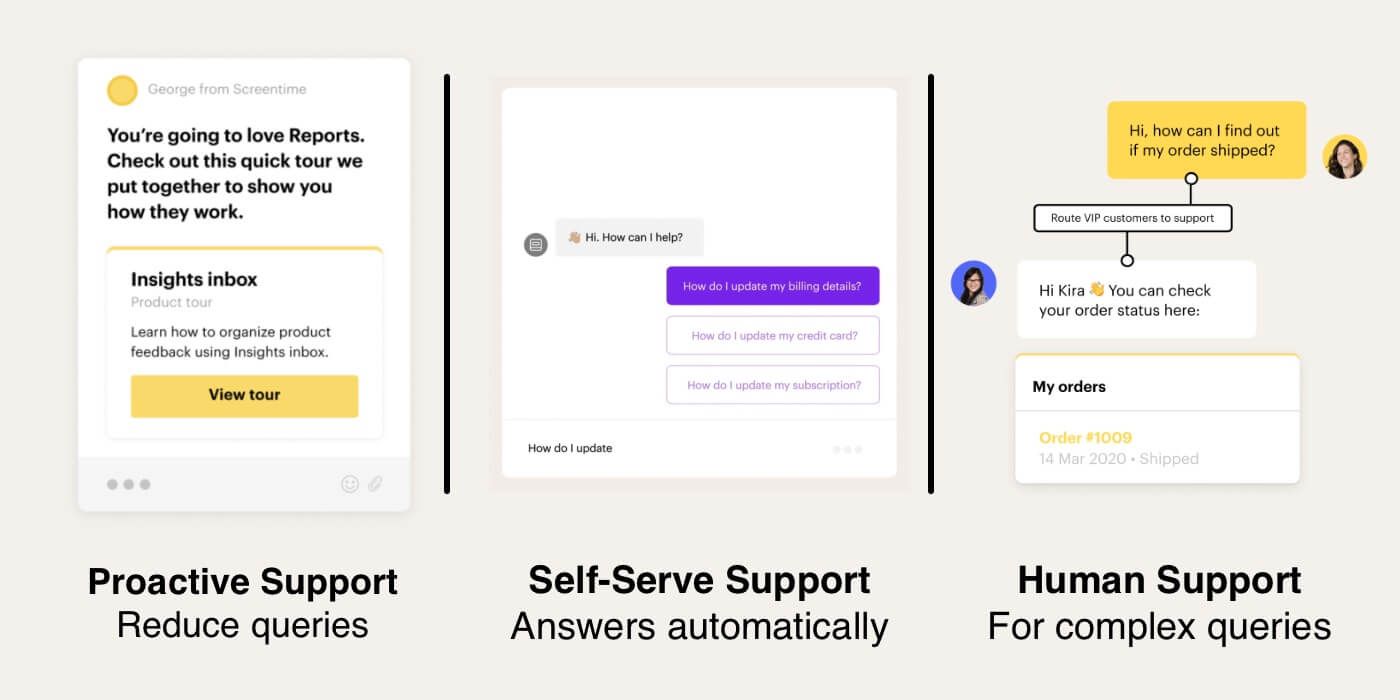
Customer Support is being turned upside down. Here’s what you need to do about it.
The internet is moving more businesses and people online, and driving a huge increase in inbound support volume. Meanwhile customer expectations are rising – they expect better experiences and immediate support resolutions.
The internet is also driving an explosion in customer choice, allowing them to easily switch to businesses who provide better experiences. Delivering those better experiences requires a fundamentally new way to do customer support, a messenger-based approach that works at internet scale.
The current pandemic is dramatically accelerating all of these epic trends, as businesses are being forced to do more with less. The businesses who are thriving right now, despite increasing support volume and a mandate to cut costs, are the ones investing in this new way of doing customer support. There are massive risks for those who don’t follow.
1. Customer support is undergoing massive, irreversible change
Once every decade or two, developments in technology trigger monumental changes in an industry. Changes in society and business, driven by the internet, are having this impact on customer support right now.
The two key changes are a shift to messenger-based support, and an investment in Bots and Messaging
There are two key parts to the changes in customer support:
- Fast changing customer expectations are driving a shift from using email to using a messenger as the primary channel of support. A messenger is both more personal and more powerful than email.
- Future facing businesses are investing in much better customer experiences, moving beyond traditional support tools that are built around deflection as the solution to scale. Instead they are using Automation, Bots, and Proactive Messaging to deliver great experiences to all their customers at increasing scale.
We call the new way to do customer support the Conversational Support Funnel
The Conversational Support Funnel has three layers:
- Proactive Support with messaging to answer customer questions in the product experience, reducing the number of queries reaching the support team
- Self-serve Support and bots to automatically answer all common customer questions, reducing inbound volume to support agents
- Only the most complex questions end up in Human Support where agents are more efficient by using a new generation of consumer grade software
The Conversational Support Funnel
Businesses who embrace the Conversational Support Funnel by choosing a messenger-based support strategy, and investing in Proactive and Self Serve support, are growing faster, seeing happier customer scores, and lower churn. And because these modern tools are easier and more enjoyable to use, and agents aren’t answering repetitive questions, Support Managers are seeing happier, more productive support agents, who are staying in their roles much longer.
The Conversational Support Funnel in action: Proactive Support, Self-serve Support, and Human Support. Click to view
Customer expectations have dramatically changed in the last decade, and customers are switching to forward thinking businesses who are investing in consumer-level customer experiences, leaving old, inferior customer support software behind. They are switching because they know they can get fast, flexible, modern, personal support. On the contrary, businesses not investing in consumer-level customer experiences are losing those same customers because they are failing to adapt, they are stuck in their old ways, and their customers are frustrated by bad experiences with outdated customer support products.
In a world where customers have an explosion in choice, great customer experiences are the new battleground, and nowhere more so than in customer support. Surviving – and thriving – requires an investment in the Conversational Support Funnel, and it needs to happen now.
“It is not the strongest of the species that survives, nor the most intelligent. It is the one that is most adaptable to change.”
Charles Darwin
2. Internet scale and changing customer expectations are driving and accelerating the change
As the internet becomes more and more embedded in every facet of our lives, and as more commerce moves online, a business’s online customer base grows and grows. This leads to more and more inbound support volume. This huge increase in inbound volume is not sustainable for most businesses as they simply can’t afford to employ more and more support staff.
Yet customer expectations continue to rise. Deflecting people when you’ve too much volume isn’t good enough. Putting people on hold isn’t good enough. Giving them a ticket number to wait days until you work down your queue isn’t good enough.
Customers expect businesses to use modern messengers for communication
Email and phone are no longer customers’ preferred ways to contact businesses. Customers know these old technologies cannot provide fast, efficient resolutions, and they know that better, more modern tools exist. They know email is slow and impersonal, whereas messengers are fast and personal. They want answers and they want them now. They don’t want to wait for a human agent when they know Bots in messengers can provide answers immediately.
“Customers have shifted their personal communication to WhatsApp and Facebook, and their work communication to Slack. They expect the same evolution from the businesses they use”
Customers know these things because they have shifted their personal communication with family and friends to messengers like WhatsApp and Facebook. And they are shifting their work communication to messaging tools like Slack. They expect the same evolution from the businesses they use.
After they experience modern Support with a messenger from future facing businesses, they become frustrated when forced to use older, inferior technology like email, forms, ticketing systems, and long wait times in phone systems. Churn increases as customers switch to these forward thinking competitors, who use these same technologies to increase customer acquisition .
Customers are switching from businesses hiding behind forms and email ticketing systems
This dynamic is greatly accelerated by the internet because people now have an explosion in choice. The internet has made it much easier to start a business, build a product, and with advanced targeting, market their product to any competitors’ customers. New, nimble competitors can start up quickly and cheaply. If you’re still hiding behind forms and email tickets, your customers are not only talking to competitors in their messengers, they’re actually signing up right there in the messenger.
This is either a huge threat, or a huge opportunity. You decide. As it is much easier to switch to a competitor, businesses who do provide a modern support experience with a messenger and Conversational Support Funnel can really accelerate their growth.
The global pandemic is dramatically accelerating the shift to messenger-based customer support
The COVID-19 pandemic has significantly accelerated this seismic change:
- Businesses, and support teams in particular, now need to do more with less.
- The pandemic has pushed nearly every business online, leading to unprecedented support volume.
- Changing customer expectations for modern support solutions has accelerated even further, as they see the best businesses adapt to these new tools in record time. As they see traditional industries like health and finance invest in modern software, investing in the Conversational Support Funnel is fast becoming table stakes.
As well as doing more with less, Support teams have suddenly moved from being co-located with office infrastructure to working from home. Now businesses need support solutions that are:
- Available anywhere, on any device
- Easy to access, easy to use
- Easy to teach to others
The user experience of these tools has never been more important.
3. The Conversational Support Funnel has three layers, and using each one makes the others better
The biggest change for support teams is that all common questions that customers ask are answered without needing a support agent. This means that the agents only work on high value, complex customer queries. These gains in efficiency are achieved by investing in all three layers of the Conversational Support Funnel:
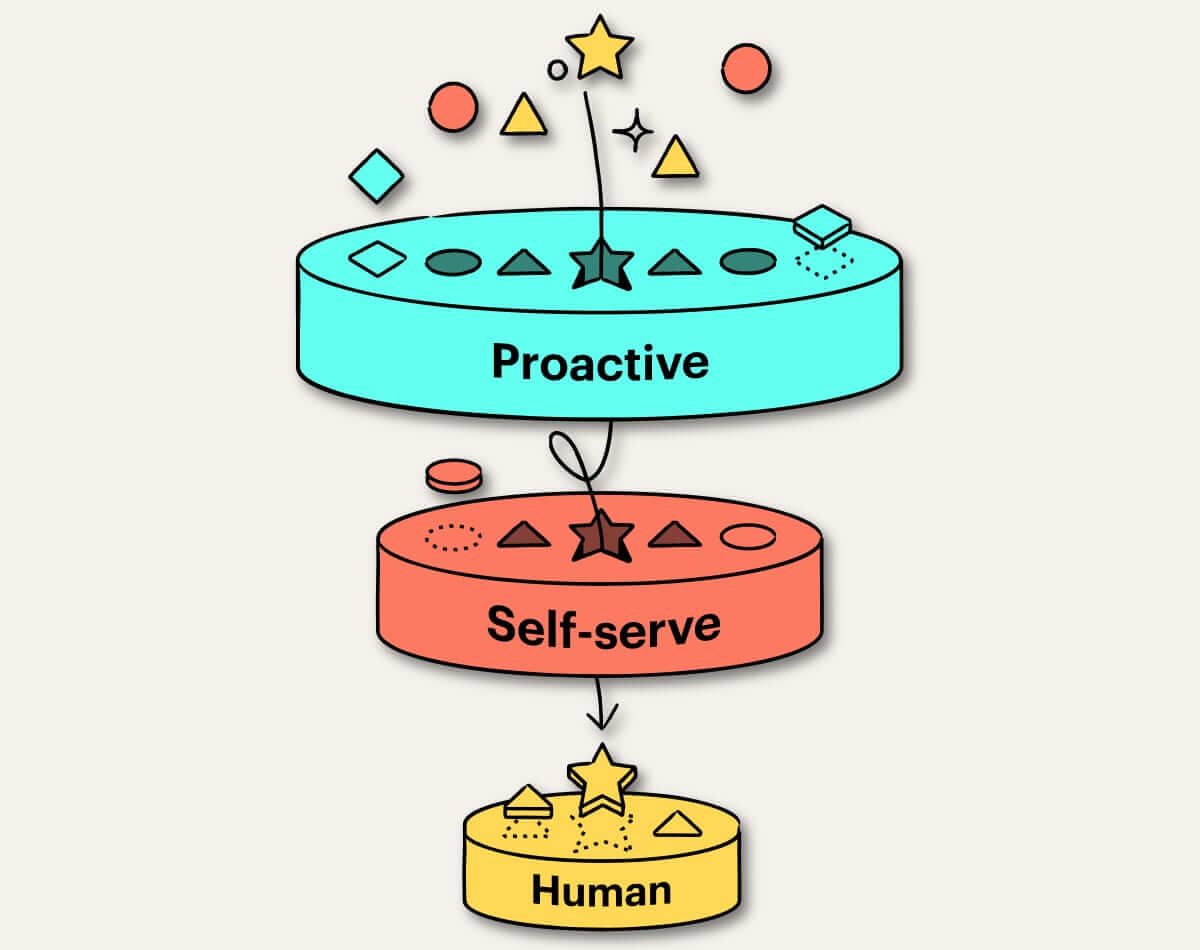
- Proactive Support: Common questions are answered before a customer has asked them. For example, by using machine learning technology to predict when the question will be asked, support teams can provide answers in their product before the question is asked. This reduces inbound volume. Because it only needs to be configured once, a proactive support message can serve all customers with little effort.
- Self-serve Support: When a common question is asked by a customer, it is answered automatically by a Bot, or easily by the customer using suggested and searchable help center content. This reduces the inbound volume that reaches support agents. Because the Bot is only configured once, then teaches itself, they can serve all customers with little effort.
- Human Support: Only complex or VIP support questions end up with support agents, who use powerful tools to resolve the question as efficiently as possible. The natural actions of the support agents then teach the modern support system to proactively answer these types of questions in the future, with proactive messaging or Bots.
Using the Conversational Support Funnel enables support teams to provide higher levels of support, to more customers, more efficiently, with fewer Support team members. It enables businesses to evolve and take advantage of internet scale.
At Intercom, we’ve been building solutions across the Funnel for the last few years. One thing we have heard from our customers is that for a support team that is used to email and ticketing systems, it can be daunting to think about messengers, Bots and proactive outbound messaging.
The good news is that it is easy to get started.
4. What you need to do now
The most important first step is to embrace this irreversible shift and think about how you can start small. Most of the customer successes we see are businesses who deeply believe in this future, but also start by evolving from where they are today and trying new things. Reading about the Funnel will give you lots of ideas and you can find out more here.
Messengers are not just Live Chat, they are a full email replacement
The biggest customer change will be to install a messenger in your app. Many support managers confuse messengers with live chat and worry about volume, but on the contrary Messengers can be used for the full spectrum of customer communication. A modern messenger does so much more than live chat, and the Intercom Messenger is the most powerful available anywhere:
- It is the most configurable Messenger and can be targeted to only show in specific circumstances – which is great for testing it out on a smaller scale first.
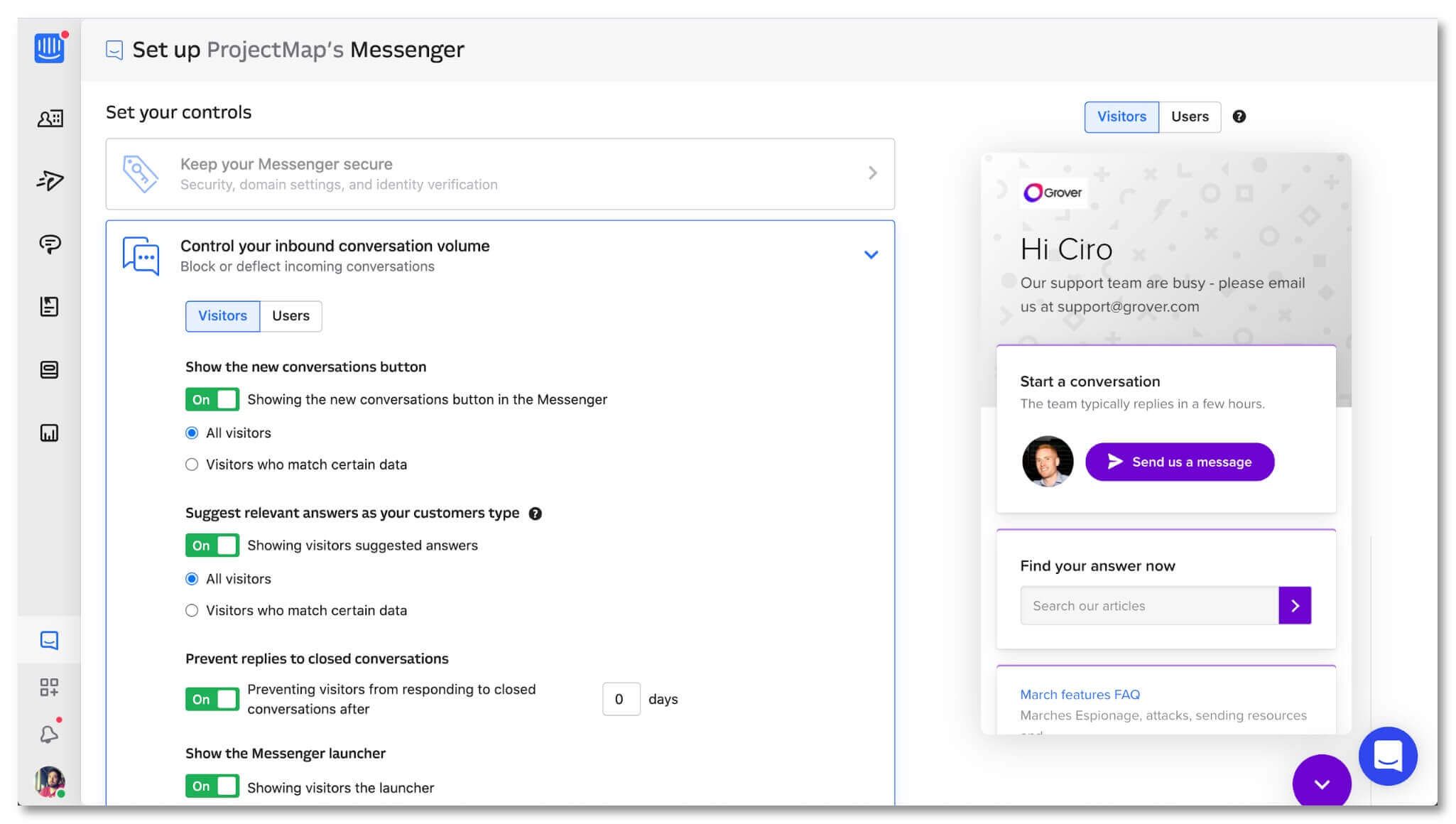
Configure the Intercom Messenger. Click to view
- It has the most comprehensive range of outbound proactive message types. From simple in-app pointer messages, to full Product Tours.
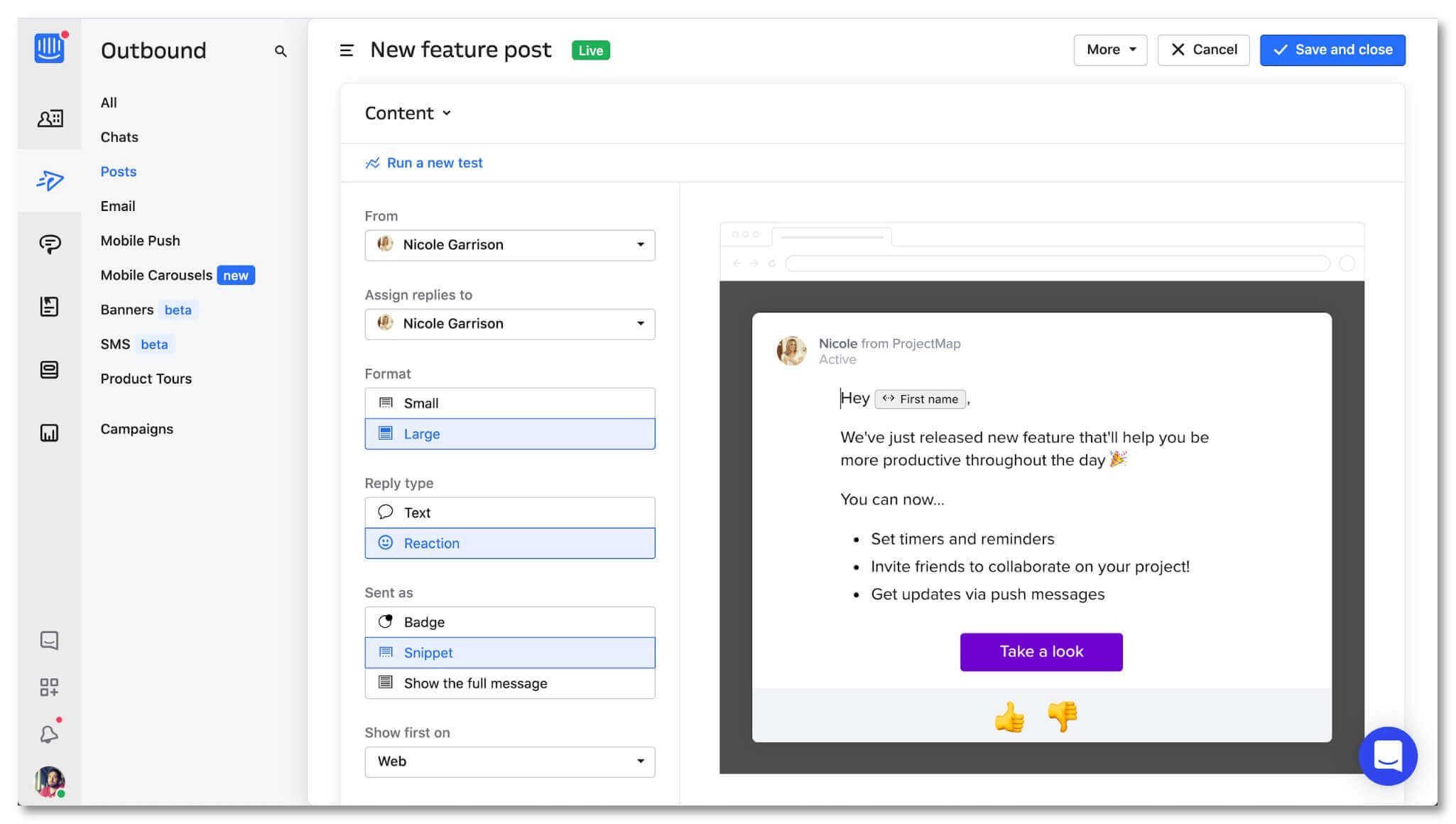
Create one of a number of proactive message types. Click to view
- It has the most comprehensive range of Bots, from Resolution Bot, to powerful Custom Bots, to simple Task Bots.
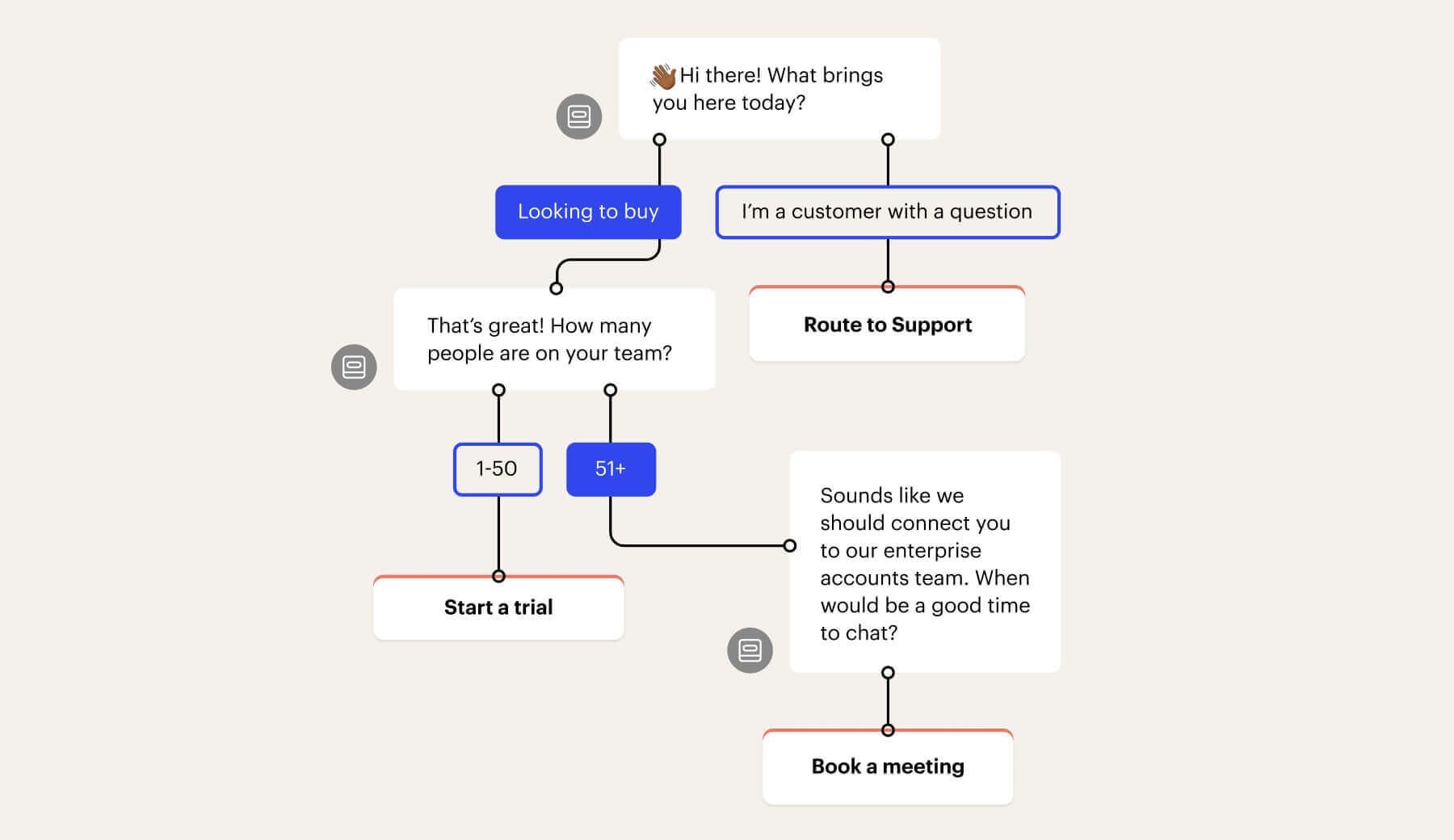
Intercom has the most comprehensive range of Bots for any situation. Click to view
- It is the only messenger with Messenger Apps, where you can add automatic workflows from other support products you use, or build a custom app yourself, reducing the workload for your human agents.
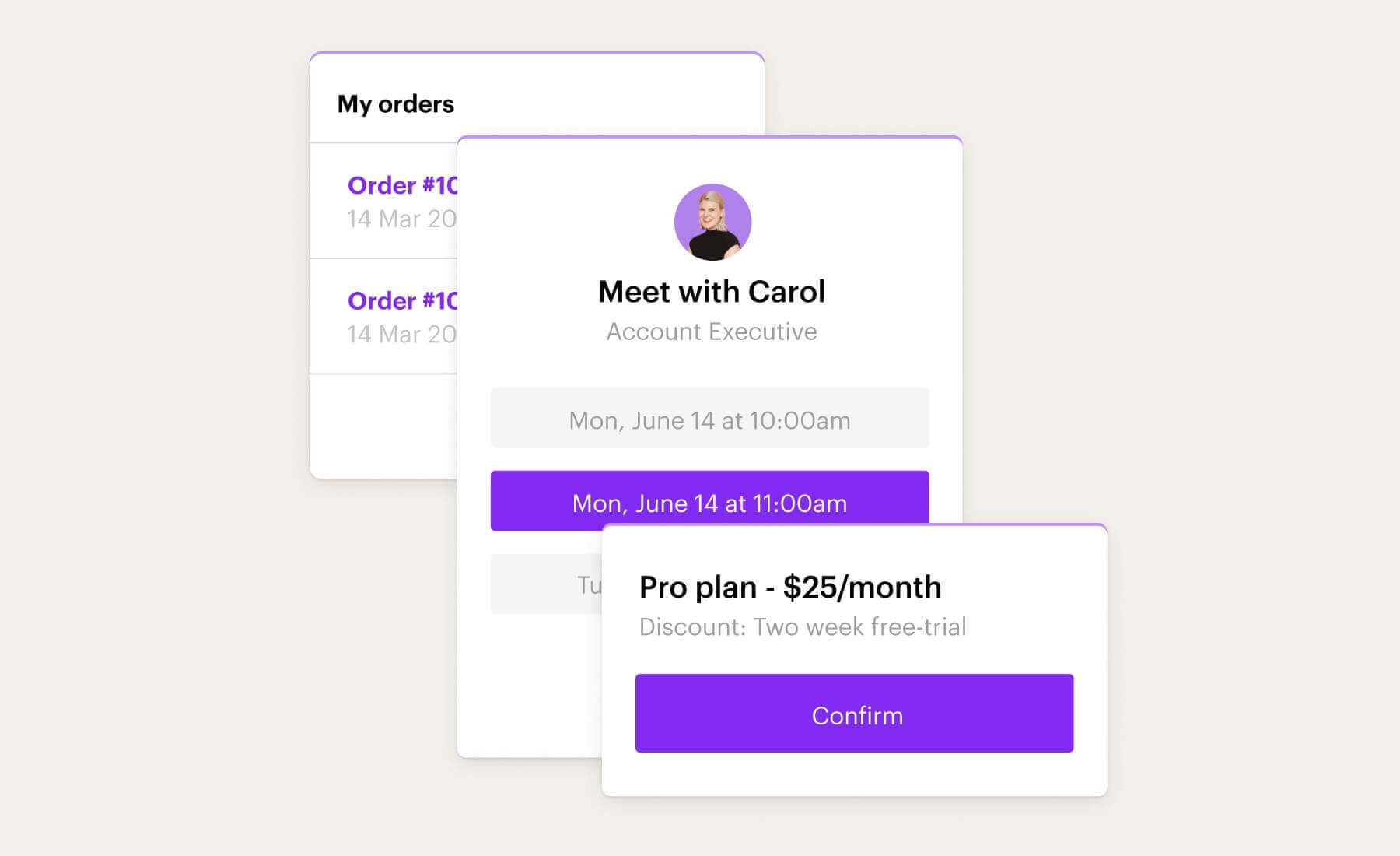
Utilize a Messenger App, or create one yourself. Click to view
- You can create a highly configurable Messenger Homescreen, where you can show Apps, and customize self-serve options including embedding your help center right there.
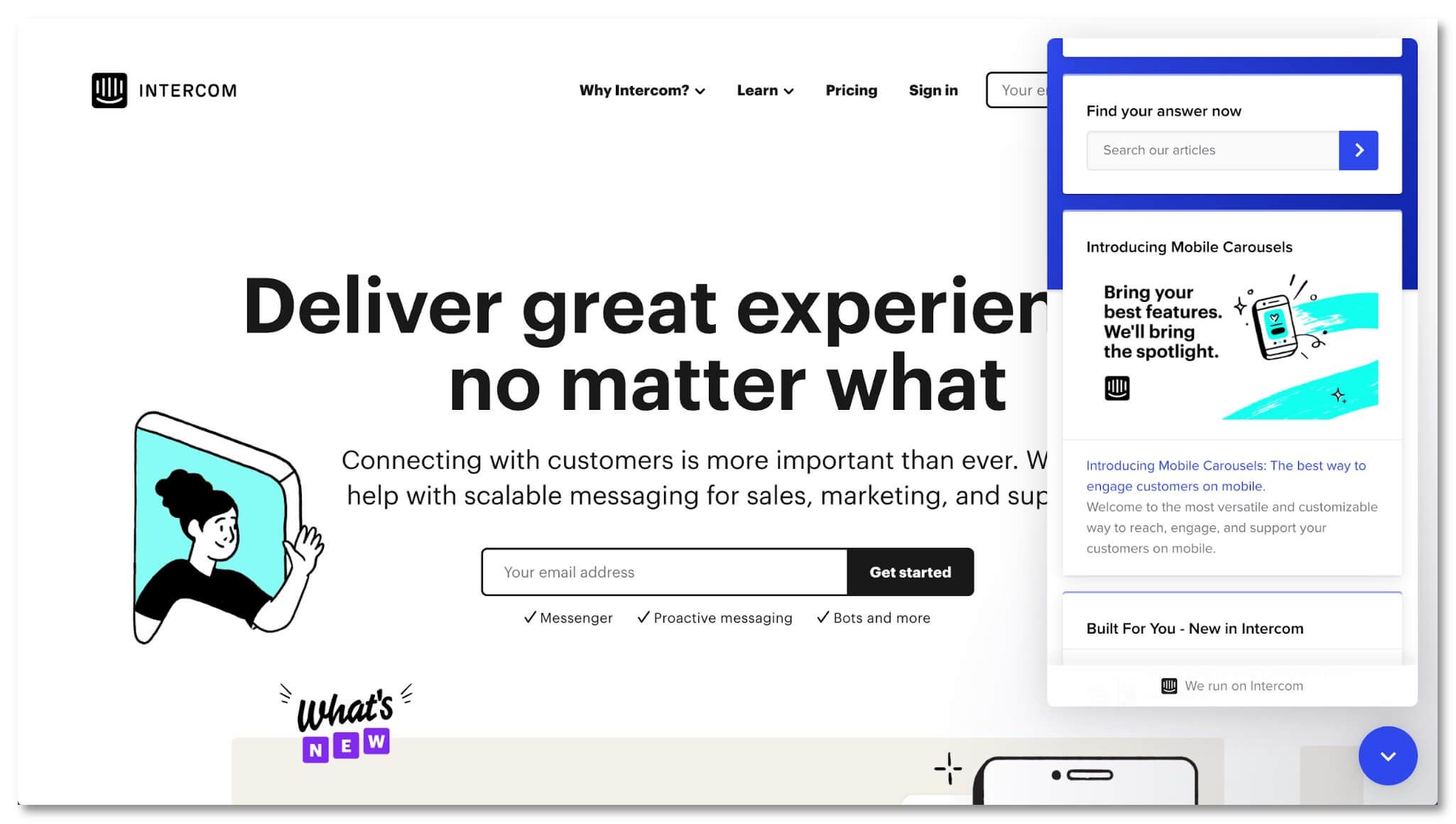
Customize the Messenger with Apps and content. Click to view
Thinking more long term, the Conversational Support Funnel is resulting in new types of roles within support teams. This is exciting as some of the best agents move into these roles rather than leave the team. They do things like design Bots for self serve, for example when they trigger and what they say. They collaborate with Marketing to design and create outbound messages like in-apps and product tours.
“The future is already here, it just isn’t evenly distributed.”
William Gibson
You can use Intercom for the full Conversational Support Funnel today, and in the coming weeks we will be launching more and more ways to do this better.
These changes to Customer Support are inevitable, irreversible, and have started already. It is important for support managers to lean in and be ahead of the curve. They will have happier customers, more customers, and happier support teams.
Three Intercom customers using the Conversational Support Funnel to manage during the pandemic
- Therapy Brands have experienced a 4300% increase in telehealth since the onset of COVID-19. They are using Articles and Resolution Bot to keep supporting mental and behavioral health providers.
- accuRx saw their support volume increase 10x. They rapidly added lots of automation for example Resolution Bot to answer questions automatically, and Custom Bots to gather data ahead of time and improve their agent efficiency.
- October are using Intercom to provide local support in France, Spain, Italy, The Netherlands, and Germany. “With Intercom we can provide local support in all these countries from one platform. Thanks to Intercom’s bots, we’ve decreased the number of conversations with clients by 30% while keeping our customer satisfaction rate at 95% and a median response time of 8 minutes across 5 languages.”

